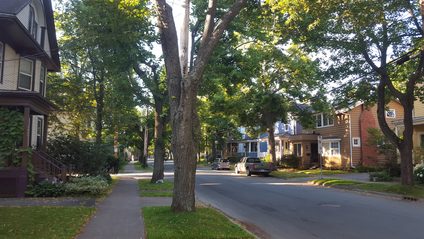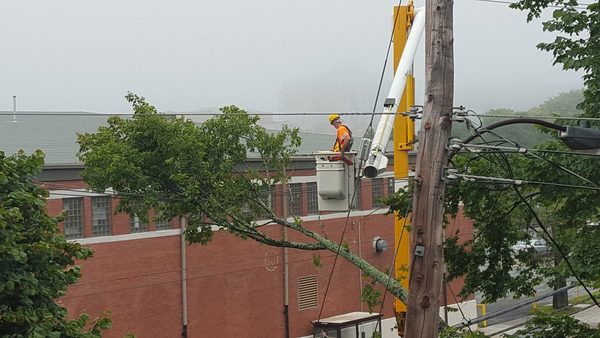
Have you noticed the drastic transformation that is underway in our city? How and why it happens is complex however well understood, but it is clearly a sign of the times – May, to be specific. If you are lucky enough to see a tree out of your window, you might notice it is finally coming to life after a long winter’s sleep. Some trees start sooner than others and our city’s dominant Norway maple population is one of the first to reanimate. The end result is an annual inevitability, the urban canopy weaving through our neighbourhoods restored to its full, luscious glory.
We humans benefit from the urban forest in a number of ways. Researchers around the world are continually improving our understanding of both the number and depth of benefits from trees in the urban jungle. From the seemingly obvious aesthetic qualities or provided shade to the less apparent stormwater interruption or energy savings, trees are an essential part of a modern city. But unlike many hinterlands where trees are part of a natural system, the urban forest takes a little more work.
To start, trees don’t plant themselves in many urban environments – your favourite street-side tree likely isn’t there by chance alone. Once planted, trees along streets require continuing care including canopy maintenance to avoid conflicts with infrastructure or people, and for the tree’s overall health. In a city the size of HRM, ensuring a healthy urban forest is more complex than finding and planting where a tree is needed or spotting trees that need a little TLC. The urban forest requires knowledgeable staff, adequate equipment, sufficient budget, and perhaps most importantly of all, a strategic plan.

Fortunately, HRM has the Urban Forest Master Plan (UFMP, full document here) to guide the stewardship of our city’s substantial green infrastructure for years to come. Co-authored by a research team at Dalhousie University’s School for Resource and Environmental Studies and municipal staff, the plan was approved by regional council in 2012. As a result of adopting aggressive tree planting targets prescribed by the UFMP, 4,600 trees have been planted in the streets of HRM since implementation began in 2013 and this spring, a further 1,020 trees are planned for streets (possibly) near you.

Why is the municipality investing so heavily in trees, and why should we care that the city have so many trees in the first place? The answer is simply that all things considered, trees are indispensable as part of sustainable cities. But enough research articles for one blog post! If you wish to understand why cities without trees simply will not do, you must experience where trees are thriving and also where they are not. To further explore why trees matter, we invite you to attend our upcoming Jane’s Walk in Halifax when we will tour the Peninsula’s South End. Our guides are tree experts John Charles, Planner with HRM Planning & Development, and John Simmons, HRM Urban Forester. Together, they will discuss how we arrived at today’s urban forest, what is being done today, and what needs to be done by the municipality and citizens alike to grow a better urban forest for tomorrow.
Where: starting in front of the Kenneth C. Rowe building at Dalhousie University
When: 1PM, Sunday June 8, for about 2 hours
See our event page on facebook for more details. All are welcome and there is no charge for participation!
